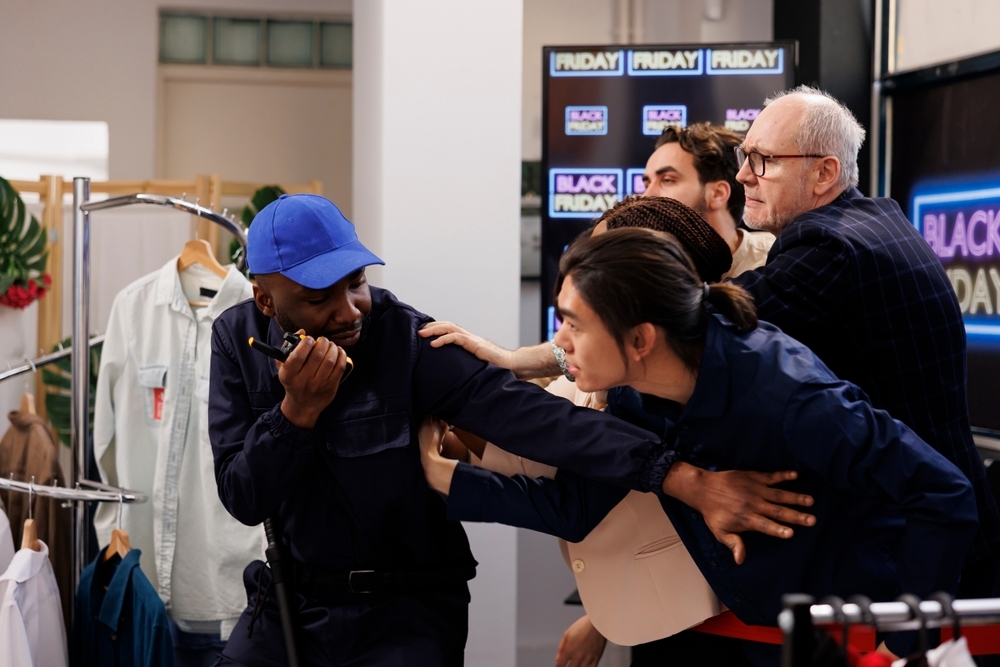In May of 2022, a security officer was shot and killed by a gunman in a Buffalo, NY supermarket. This past spring, a security officer was killed in Dallas as he tried to stop a teenager from breaking into cars. Most recently, a Nashville security officer was shot and injured in a drive-by shooting.
Security officers are expected to do increasingly dangerous work: stopping crime, dealing with unhoused squatters on private property, and confronting violent individuals. Unfortunately, they often don’t have the training or tools to handle those threats.
This is an ethical problem: when you put your employees into a guard uniform, you are painting a target on their backs. If you aren’t equipping them for the risks you’re sending them out to face, you’re putting both them and the public at risk.
Security pay vs. security responsibilities
Security guards are not highly paid. The average hourly wage for a security officer is less than $15 and the majority of security officers have a high school education. Many officers are young and inexperienced, and others are retirees who may not be able to physically handle a confrontation. However, these officers are being asked to guard important assets and handle high-level threats, often without proper training.
Take the example of asking guards to respond to squatters in private buildings. Your officers are being placed in a population that’s prone to violence and conflict. They may face abuse from the unhoused population. They may also react violently, injuring one of the people on the site. Officers are also expected to guard buildings during protests and riots, but they may not be prepared to handle that sort of threat, and they might even escalate the situation.
There are plenty of examples of confrontations in which officers made a bad situation worse; guards have shot, injured, and killed people on the job.
While guard companies are at fault for sending undertrained and unequipped guards into the field, they aren’t completely to blame; in many cases the clients aren’t willing to pay higher pay rates for more qualified guards, nor are they willing to purchase better equipment.
Unfortunately, trying to get a bargain on security means both officers and the general public are being put at risk.
What can companies do to improve security and protect guards?
Obviously, we’d like to see wages and educational requirements increase for security personnel, but that might not be immediately possible for many organizations. It is, however, important to do background checks for every candidate and to provide training for the situations guards might face on the job.
Guards should also be adequately equipped, not necessarily with weapons, but with vests to keep them safe from potential attacks.
Lastly, automated solutions can help keep officers and others safe by putting autonomous robots in hazardous situations rather than by putting an officer at risk. For example, Robotic Assisted Devices (RAD), makes devices ranging from the wall-mounted Wally (which can screen visitors for masks and take temperatures) to ROSA, an autonomous 180-degree camera and one-way communications device, to the wheeled, roving ROAMEO. Those solutions can patrol difficult areas, or handle access control.
To learn more about security force optimization contact us .






